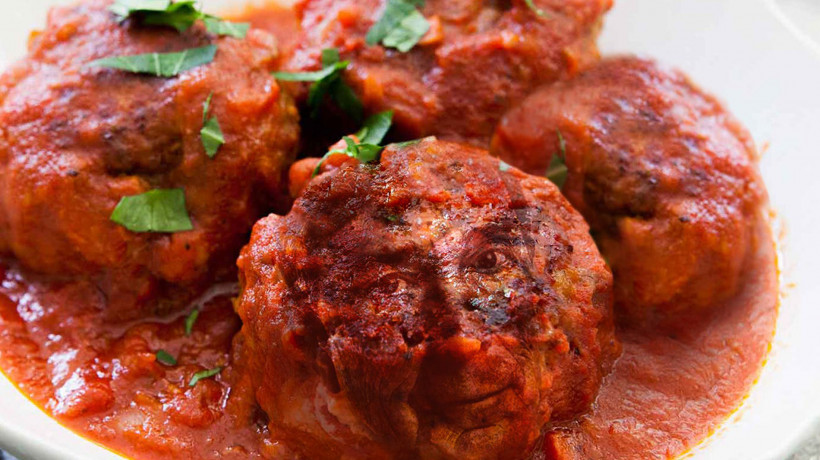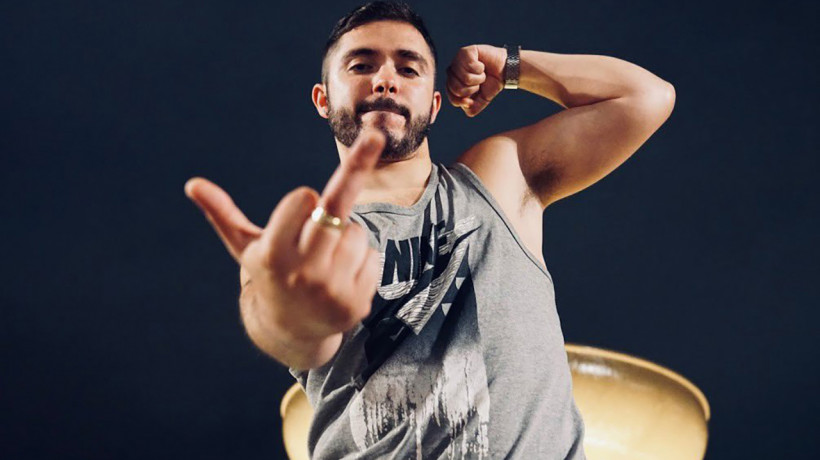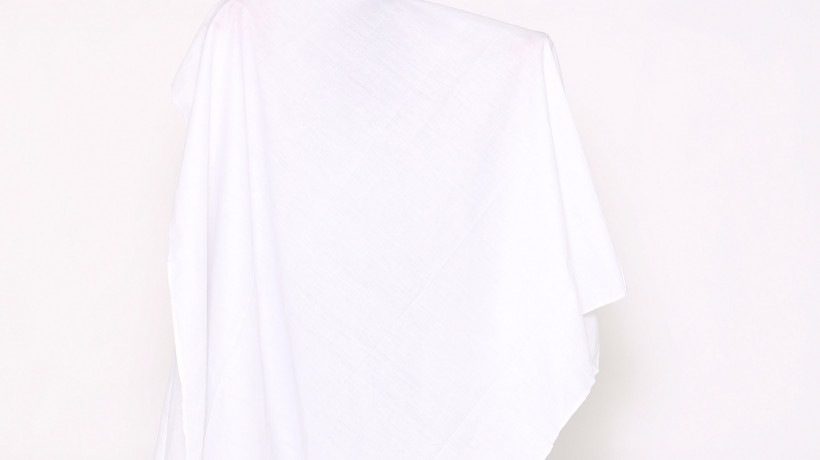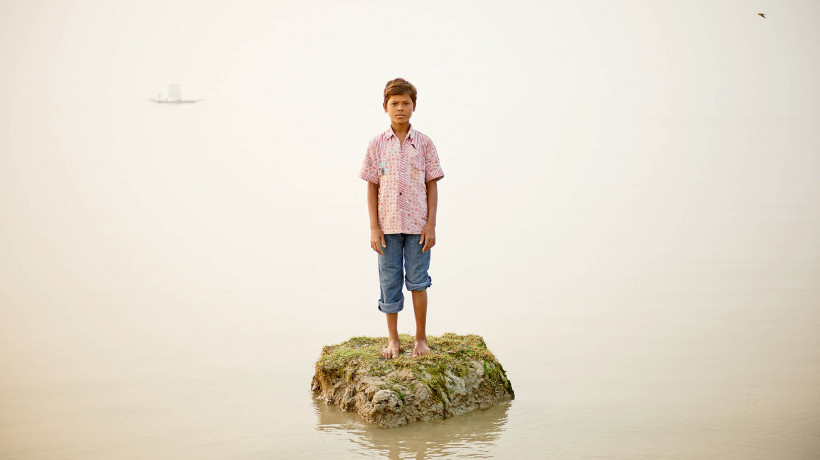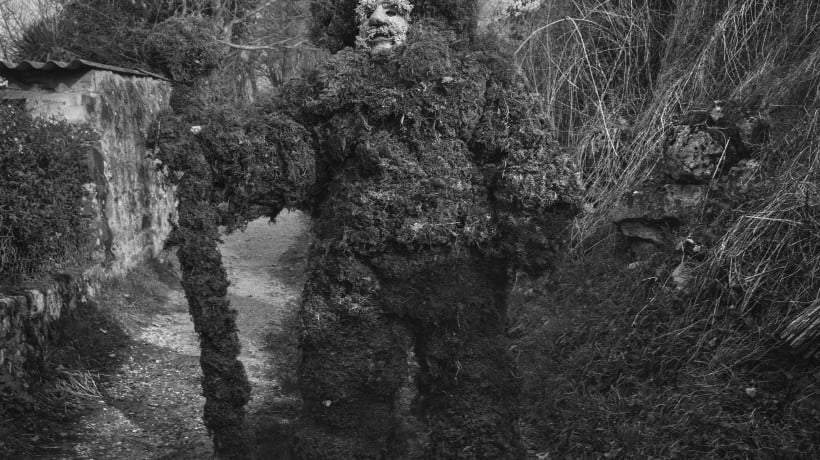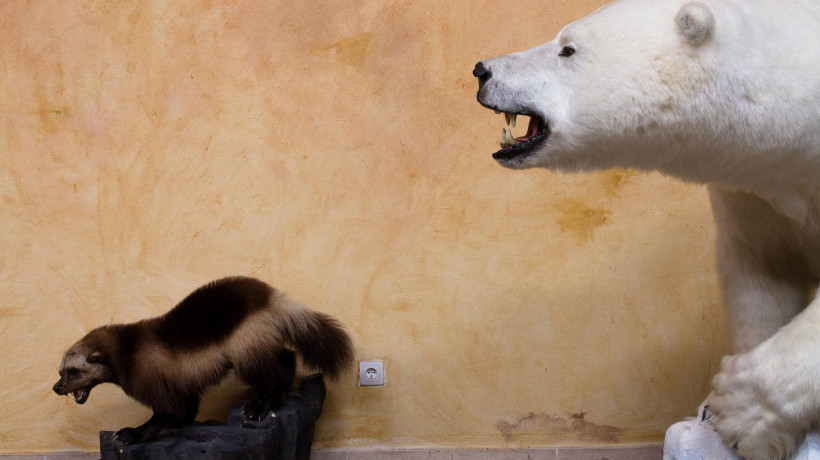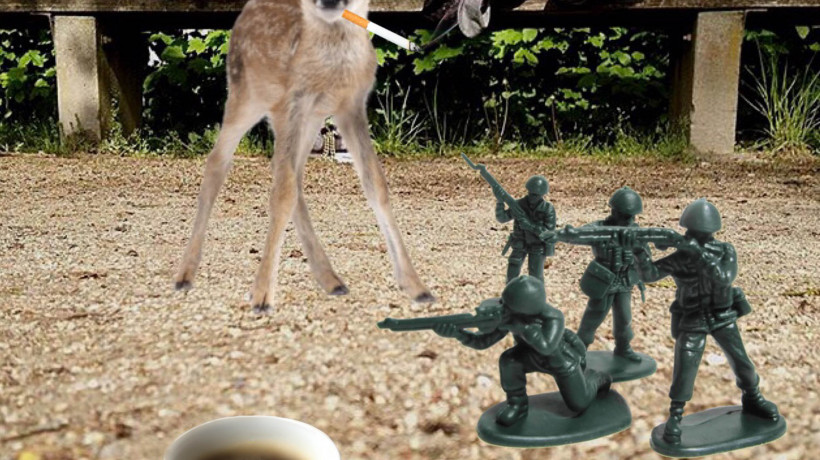- 2024
- 12/02/2024
current
When one visits the rooms dedicated to Velásquez in the Museum of Prado, it is extraordinary how portraits of kings and those of jesters and peasants are laid side-by-side. The nobility and dignity given to the lower members of the court exemplifies an early example of a revolution in the politics of representation. In the antipodes of this example, we analyse how the campaign of the millionaire Michael Bloomberg to be the Democratic Candidate for the 2020 elections hired companies to produce nonsense memes and digital propaganda. Our hypothesis is that on the center of its strategy the goal was to create an image of Bloomberg that besides viral would be relatable and humorous. The article overviews the evolution of the portrait as an element of political of representation and reflects on how the development of modern and contemporary art transformed the art of political portraiture. Furthermore it deliberates on the two-way appropriation of representation techniques between art movements and political movements.
- Keywords: aestheticization of politics, Diego Velázquez, digital propaganda, Michael Bloomberg, politics and aesthetics, politics of representation
João Pedro Amorim is a visual artist, a PhD candidate and researcher at the Research Center for Science and Technology of the Arts (CITAR), with a FCT fellowship. His papers have been published in indexed journals (Scopus and WoS). His film on shadows and their names was premiered in Doclisboa 2020. Previously, he was a research fellow at the Digital Creativity Centre at the School of Arts at Universidade Católica Portuguesa, where he coordinated the communication team and the residency program in partnership with Calouste Gulbenkian Foundation. He holds a Master in Contemporary Artistic Practices (Faculty of Fine Arts of the University of Porto) and a Bachelor in Communication Sciences (University of Porto). Between 2014 and 2015 he collaborated with the collective Caucaso Factory (Bologna/ Berlin) in several film projects as assistant director.
- Benjamin, W. 1939/2000. Oeuvres III. Translated by Maurice Gandillac, Rainer Rochlitz and Pierre Rusch. Paris: Gallimard.
- Berger, John. 1972. Ways of Seeing. London: British Broadcasting Corporation and Penguin Books.
- Blumenthal, Mark. 2020. “When it comes to Trump and Biden, honesty can mean different things.” August 10. Available online here.
- Doyle, Jon. 2018. “The changing face of post-postmodern fiction: Irony, sincerity, and populism.” Critique: Studies in Contemporary Fiction 59 (3): 259-270. https://doi.org/10.1080/00111619.2017.1381069
- Edgar, Andrew. 2003. “Velázquez and the representation of dignity.” Medicine, Health Care and Philosophy 6: 111–121.
- Foucault, Michel. 1966/2005. The order of things. London and New York: Routledge.
- Marcin, Tim. 2020. “Bloomberg is running his campaign’s Twitter like a brand, and it’s not landing.” February 12. Available online here.
- Oliver, John. 2019. “Boris Johnson: Last Week Tonight with John Oliver (HBO).” Youtube, July 29, 2019.
- O’Neil, Luke. 2019. “ ‘I’m inevitable’: Trump campaign ad shows president as Avengers villain Thanos.”. December 11.
- Rancière, Jacques. 2010. O Espectador Emancipado. Translated by José Miranda Justo. Lisbon: Orfeu Negro.
- Rancière, Jacques. 2011. O Destino das Imagens. Translated by Luís Lima. Lisbon: Orfeu Negro.
- Roncero López, Victoriano. 2007. “The Court Jester in 16th and 17th Century Spain: History, Painting, and Literature.” Translated by Esther Cadahía. South Atlantic Review 72 (1, Winter), Cultural Studies in the Spanish Golden Age: 93–110.
- Rosler, Martha. 2010. “Take the Money and Run? Can Political and Socio–critical art ‘survive’?” e-flux 12 (January). Available online here.
- Sardar, Ziauddin. 2020. “The smog of ignorance: Knowledge and wisdom in postnormal times.” Futures 120. https://doi.org/10.1016/j.futures.2020.102554
- Steyerl, Hito. 2011. “Art as Occupation: Claims for an Autonomy of Life.” e-flux 30 (December). Available online here.
- Stiegler, Bernard. 2018. The neganthropocene. Translated and edited by Daniel Ross. London: Open Humanities Press.
- Woodend, Kyle. 2019. “Irony, Narcissism, and Afect in David Foster Wallace’s Infinite Jest.” Critique: Studies in Contemporary Fiction 60 (4): 462–474. https://doi.org/10.1080/00111619.2019.1596876
DOWNLOAD PDF:
India’s Independence from the colonial rule saw the nation’s first Prime Minister Jawaharlal Nehru emerge as a powerful visual presence. At the peak of his popularity, in June 1955, he made a highly publicised 16-day visit to the USSR. This visit, made in the backdrop of the Cold War and the impending Big Four Conference, was covered in detail by the Indian and foreign press, as well as both government’s official photographers and camerapersons. Paper addresses an official album made after this iconic visit to investigate the role of photography within India-Soviet diplomatic networks. Casting Nehru as the Master persona, it delves into the function of photography in recasting his image as an international traveller, a crusader for peace, a negotiator, and a friend of the Soviet. Considering India’s and Soviet’s differing political stance and international position in that period, the article questions what does the presence of these official photographs reveal about emerging trans-national networks and if there were there any deviations in this careful reconstruction of the Master and his ally.
- Keywords: diplomatic visit, Nehru, photography album, Soviet Union
Krupa Desai is a PhD scholar at the School of Art, Birkbeck. Her doctoral thesis is on the social history of photographic practices in India. Her work looks at photography around industrialisation, development, and transnational diplomatic exchange, during the Nehruvian period. Her PhD is supported by the Inlaks Shivdasani Foundation and the Birkbeck School of Arts Post Graduate Research Scholarship.
- Barnes, Robert. (1979) 2013. “Between the Blocs: India, the United Nations, and Ending the Korean War.” The Journal of Korean Studies 18 (2): 263–286. Available online here. https://doi.org/10.1353/jks.2013.0022
- Deleuze, Gilles. 1986. Cinema 1: The Movement-Image. Translated by H. Tomlinson and B. Habberjam. Minneapolis: University of Minnesota.
- Dewan, Deepali, and Deborah S. Hutton. 2013. Raja Deen Dayal: Artist-Photographer in 19th-Century India. Alkazi Collection of Photography.
- Doane, Mary Ann. 2003. “The Close-up: Scale and Detail in the Cinema.” Differences: A Journal of Feminist Cultural Studies 14 (3): 89–111. https://doi.org/10.1215/10407391-14-3-89
- Eisenstein, Sergei. 1949. Film Form: Essays in Film Theory. Edited and translated by Jay Leyda. San Diego: Harcourt.
- Hegel, Georg Wilhelm Friedrich. 1998. Phenomenology of spirit. Motilal Banarsidass Publ.
- Jain, Jyotindra, ed. 1998. Picture Showmen: Insights into the Narrative Tradition in Indian Art. Mumbai: Marg Publications.
- Mehrotra, Santosh K. 1990. India and the Soviet Union: Trade and Technology Transfer, No. 73. Cambridge: Cambridge University Press.
- Menon, Kumara Padmanabha Sivasankara. 1963. The Flying Troika. London: Oxford University Press.
- Mockba (Moscow). 1955. Moscow: State Fine Arts Publishing House.
- Prasad, H. Y. Sharada, A. K. Damodaran, and Sarvepalli Gopal. 2005. Selected Works of Jawaharlal Nehru: Second Series, Vol. 29. New Delhi: Jawaharlal Nehru Memorial Fund.
- Reddy, Gunupati Keshava. 1955. “Moscow Gives Mr. Nehru a Touching Send-Off: VISIT WAS SOVIET UNION’S FESTIVAL OF THE YEAR.” The Times of India (1861-current), June 24. [From the ProQuest database.]
- Shimazu, Naoko. 2014. “Diplomacy as Theatre: Staging the Bandung Conference of 1955.” Modern Asian Studies: 225–252. https://doi.org/10.1017/s0026749x13000371
- Singh, Sinderpal. 2011. “From Delhi to Bandung: Nehru,‘Indian-ness’ and ‘Pan-Asianness’.” South Asia: Journal of South Asian Studies 34 (1): 51–64. https://doi.org/10.1080/00856401.2011.549084
- Teixeira, Mariana. 2018. “Master-Slave Dialectics (in the Colonies).” Krisis 2.
Financial domination (findom) is a fetish practice in which a submissive derives erotic pleasure from sending money to a dominant or a cashmaster. Cashmasters produce photographs meant to elicit this desire in cashslaves, essentially arousing the desire to send money. This essay approaches this emergent genre of seemingly self-promotional photography as a genre of photographic performativity (Levin 2009). Rather than the desire to capture or represent (Batchen 1999), these images evidence a choreography of photographic performativity including both masters (as makers) and slaves (as viewers). Though the compliance with form and economic practice tempts the interpretation that masters are now slaves, this essay suggests that these images invite performances of domination, submission, and critique into wider performatives of arousal and elicitation. What critics and social analysts perceive as power (economic, erotic, or otherwise) are, in fact, desire at its seams, in the process of active and cooperative composition.
- Keywords: critique, desire, fetish, financial domination, masculinity, photography and performative
nel yang is a PhD candidate in the Department of Anthropology at the University of Texas at Austin. Their research engages the areas of ordinary finance, models of subjectivity (self, user, analyst), the semiotics of desire, and experimental ethnography. Current projects include investigations of digitally mediated transaction (of which findom is one), subjectivity-models in the field of user research (UX), and Taiwanese claw machines (娃娃機). Other media they work with include free verse, “lyric ethnography”, 35mm (color), and digital performatives (tweets).
- Austin, J.L. 1975. How to Do Things with Words. Harvard University Press.
- Barrett, Rusty. 2017. From Drag Queens to Leathermen: Language, Gender, and Gay Male Subcultures. Studies in Language, Gender and Sexuality. New York, NY: Oxford University Press. https://doi.org/10.1111/amet.12652
- Barthes, Roland, and Stephen Heath. 2009. Image, Music, Text. Nachdr. New York, NY: Hill and Wang.
- Batchen, Geoffrey. 1999. Burning with Desire: The Conception of Photography. 1. MIT Press Paperback ed. Cambridge, Mass.: MIT Press.
- Berg, Heather. 2014. “Labouring Porn Studies.” Porn Studies 1 (1–2): 75–79. https://doi.org/10.1080/23268743.2013.874621.
- Bright, Deborah, ed. 1998. The Passionate Camera: Photography and Bodies of Desire. London ; New York: Routledge.
- Buckley, Dean. 2018. “The Recession, by Soderbergh.” The Sundae (blog). June 18, 2018. https://thesundae.net/2018/06/18/the-recession-by-soderbergh/.
- Chu, Andrea Long. 2019. Females. London ; New York: Verso.
- Chun, Wendy Hui Kyong, and Sarah Friedland. 2015. “Habits of Leaking: Of Sluts and Network Cards.” Differences 26 (2): 1–28. https://doi.org/10.1215/10407391-3145937.
- Clark, Larry. 1971. Tulsa. New York: Lustrum Press.
- _________. 1983. Teenage Lust: An Autobiography. New York: Larry Clark.
- Derrida, Jacques. 1982. Margins of Philosophy. Chicago: University of Chicago Press.
- _________. 2006. Specters of Marx: The State of the Debt, the Work of Mourning and the New International. Routledge Classics. New York: Routledge.
- Goodman, Nelson. 1978. Ways of Worldmaking. Indianapolis: Hacket Publishing Co.
- Halperin, David M., and Trevor Hoppe, eds. 2017. The War on Sex. Durham, [North Carolina] ; London: Duke University Press.
- Johnston, Patricia A. 1997. Real Fantasies: Edward Steichen’s Advertising Photography. Berkeley, Calif: University of California Press.
- Jones, Amelia. 2002. “Performing the Other as Self: Cindy Sherman and Laura Aguilar Pose the Subject.” In Interfaces: Women/Autobiography/Image/Performance, edited by Sidonia Smith and Julia Watson. Ann Arbor, MI: University of Michigan Press.
- Klima, Alan. 2019. Ethnography #9. Durham: Duke University Press.
- Lee, Jiz, and Rebecca Sullivan. 2016. “Porn and Labour: The Labour of Porn Studies.” Porn Studies 3 (2): 104–6. https://doi.org/10.1080/23268743.2016.1184474.
- Levin, Laura. 2009. “The Performative Force of Photography.” Photography and Culture 2 (3): 327–36. https://doi.org/10.2752/175145109X12532077132473.
- Mitchell, W. J. T. 2005. What Do Pictures Want? The Lives and Loves of Images. Chicago: University of Chicago Press.
- Mrázek, Rudolf. 2002. Engineers of Happy Land: Technology and Nationalism in a Colony. Princeton Studies in Culture/Power/History. Princeton, N.J: Princeton University Press. https://doi.org/10.1086/ahr/108.3.815
- Page, Janis Teruggi. 2006. “Myth and Photography in Advertising: A Semiotic Analysis.” Visual Communication Quarterly 13 (2): 90–109. https://doi.org/10.1207/s15551407vcq1302_3.
- Phelan, Peggy. 2009. “‘In the Valley of the Shadow of Death’: The Photographs of Abu Ghraib.” In Violence Performed: Local Routhes and Global Routes of Conflict, edited by Patrick Anderson and Jisha Menon, 372–84. London: Palgrave. https://doi.org/10.1007/978-0-230-31692-8_18
- Serres, Michel. 1997. The Troubadour of Knowledge. Translated by Sheila Glaser and William Paulson. Ann Arbor, MI: University of Michigan Press. https://doi.org/10.3998/mpub.9722.
- Sia, Tiffany. 2019. 咸濕 (Salty Wet). New York City: Inpatient Press.
- _________. 2020. 更咸更濕 TOO SALTY TOO WET [LEAKED]. New York City: Speculative Place.
- Silverman, Kaja. 1995. Threshold of the Visible World. New York and London: Routledge.
- Stewart, Kathleen. 1996. A Space on the Side of the Road: Cultural Poetics in an “Other” America. Princeton: Princeton University Press.
- Taylor, Diana. 2003. The Archive and the Repertoire: Performing Cultural Memory in the Americas. Durham: Duke University Press. https://doi.org/10.1215/9780822385318
- Weiss, Margot Danielle. 2011. Techniques of Pleasure: BDSM and the Circuits of Sexuality. Durham: Duke University Press.
- Williams, Linda. 2004. Porn Studies. Durham: Duke University Press.
- Wong, Winnie Won Yin. 2013. Van Gogh on Demand: China and the Readymade. Chicago ; London: University of Chicago Press. https://doi.org/10.7208/chicago/9780226024929.001.0001
BUY PDF: nel yang: Arousal and Elicitation – PDF
DOWNLOAD PDF:
The deadline for contribution proposals (150-word abstracts and/or visuals) is April 28, 2022. The deadline for the finished contributions from accepted proposals is July 4, 2022. Please send proposals via the online form or contact us directly at editors(at)membrana.org.
- 2022
- 18/02/2022
The deadline for contribution proposals (150-word abstracts and/or visuals) is April 28, 2022. The deadline for the finished contributions from accepted proposals is July 4, 2022. Please send proposals via the online form or contact us directly at editors(at)membrana.org.
- 2022
- 18/02/2022
- Vol. 5, no. 1
- 2020
- 05/04/2021
- Vol. 5, no. 1
- 2020
- 04/04/2021
Open Access
Emina Djukić (1982) is a visual artist and pedagogue. She completed her master’s degree in photography at the VŠVU in Bratislava, and currently she is a professor at the Academy of Fine Arts and Design, photography department. From 2005 to 2010 she collaborated with the Medvode Youth Cultural Center, where she was also a program director for some time. For several years as a mentor she participated in the Celje Fokus summer workshop and was her artistic director in 2013. Since 2015 she has been a member of the editorial board of Fotografija magazine. She is researching the media of photography for a long time; Currently she is mainly concerned with the narrative possibilities of photography and its relation to the past.
DOWNLOAD PDF:
Urška Savič (1992) is a critic and journalist active in the fields of visual arts and cultural politics, working also as a photographer and radio artist. She finished her BA in photography at FAMU (Prague, 2014) on the topic of collage and photo-montage and has obtained her MA at the Department of Sculpture at ALUO (Ljubljana), focusing on archiving practices in contemporary art. She was a residency artist at the Centre for Digital Arts in Holon, Israel (2015), and did an internship at the Peggy Guggenheim Museum in Venice, Italy (2015). Since 2017, she is an active participant of the cultural redaction at Radio Študent, one of Europe’s oldest and strongest non-commercial, alternative radio stations. There, she has been a curator of an open radio (art-theory) research platform R A D A R since 2019.
DOWNLOAD PDF:
Although the interpretations of Koštrun’s works and his entire opus are undeniably multifaceted and open to different interpretations and readings, the article suggests that all his word does share a common meditative stillness and sense of solitariness. Peter Koštrun’s opus lingers on the intersection of pristine nature and cultural landscape, on the intersection of the impact of humans on the environment and the insignificance of the individual in relation to nature. Even if Koštrun’s photographic motifs allude to archaism and romanticism, and are at first glance connected to the tradition of photographic pictorialism, they are in their essence distinctly modern, attached to the reality of the here and now. His expression is completely non-narrative in the classic sense of photographic representation, as the images do not tell a linear story, but are dedicated to visual language, which is (as opposed to the written word) always ambivalent and layered.
- Keywords: Anthropocene, landscape, melancholy, mortality, nature photography
Miha Colner (born 1978) has graduated from Art History and works as a freelance curator and art critic. Colner works as a curator and programme coordinator at the International Centre of Graphic Arts / Svicarija Creative Centre in Ljubljana. He is also active as a publicist, specialised in photography, printmaking, artists’ moving image and various forms of (new) media art. In the period 2006-2016 he was a curator at Photon – Centre for Contemporary Photography, Ljubljana. Since 2005 he has been a contributor of newspapers, magazines, specialist publications, and his personal blog, as well as part-time lecturer. In 2006, he became a member of the project group Station DIVA at the SCCA Institute in Ljubljana, which is creating an archive and conducts research on Slovenian video art. In 2007, he co-curated and co-organized Break 2.4 festival, held biannually by K6/4 Institute. Since 2005, he has also worked as an art critic and a regular member of the cultural department at Radio Študent – he is an editor of the show on contemporary art Art-Area. He is also a regular external contributor to the daily newspaper Dnevnik and to the magazines Fotografija and Art-Words. He occasionally contributes to other specialist magazines on fine art and music, such as Maska, Forum, Časopis za kritiko znanosti, Flash, Folio, Zarez, Art Kontura, Frakcija (Croatia), Foto dokumenti (Serbia), Flaneur, Cluster (Great Britain), and Sculpture Network (USA).
He lives and works in Ljubljana, Slovenia.
Peter Koštrun (1979, Ljubljana, Slovenia) graduated from Academy of Fine Arts and Design in Ljubljana, where he currently teaches at the Department of Photography. He has been exhibiting at home as well as abroad since 2003. Koštrun is a master of landscape photography known for his depiction of empty and deserted landscapes as well as his refined selection of framing and light. He is less interested in the documentary dimension of the land as he approaches the genre conceptually. His works contain a subtle atmosphere that evokes a feeling of something greateror even immortal. He lives and works in Brnica near Celje. Recent solo exhibitions include Moments, Mottard & Jenray, Liège (2012) in Belgium; The Time is Now, Photo Gallery Lang, Samobor in Crotatia (2012), Singularity, Photon Gallery in Vienna, Austra (2014) and Premonition, Center for Contemporary Arts Celje, Slovenia (2016). Koštrun has shown his work in many group exhibitions at home and abroad, including Almost Spring, 100 Years of Slovene Art at the Maribor Art Gallery (2012), as well as in one of the most important exhibitions of contemporary landscape photography, Sense of Place at the Bozar Expo in Brussels (2012), and the exhibition Land / City / Real / Imagined at Diemar / Noble Gallery in London (2011). His most recent exhibitions are After all, Cellar Gallery, Kraków, Poland (2016) and Premonition, Photon Gallery Vienna, Austria (2019). Koštrun’s works can be found in the Essl collection in Vienna and in the collection of the Cabinet of Slovenian Photography in the Museum of Gorenjska in Kranj.
DOWNLOAD PDF:
Miha Colner (born 1978) has graduated from Art History and works as a freelance curator and art critic. Colner works as a curator and programme coordinator at the International Centre of Graphic Arts / Svicarija Creative Centre in Ljubljana. He is also active as a publicist, specialised in photography, printmaking, artists’ moving image and various forms of (new) media art. In the period 2006-2016 he was a curator at Photon – Centre for Contemporary Photography, Ljubljana. Since 2005 he has been a contributor of newspapers, magazines, specialist publications, and his personal blog, as well as part-time lecturer. In 2006, he became a member of the project group Station DIVA at the SCCA Institute in Ljubljana, which is creating an archive and conducts research on Slovenian video art. In 2007, he co-curated and co-organized Break 2.4 festival, held biannually by K6/4 Institute. Since 2005, he has also worked as an art critic and a regular member of the cultural department at Radio Študent – he is an editor of the show on contemporary art Art-Area. He is also a regular external contributor to the daily newspaper Dnevnik and to the magazines Fotografija and Art-Words. He occasionally contributes to other specialist magazines on fine art and music, such as Maska, Forum, Časopis za kritiko znanosti, Flash, Folio, Zarez, Art Kontura, Frakcija (Croatia), Foto dokumenti (Serbia), Flaneur, Cluster (Great Britain), and Sculpture Network (USA).
He lives and works in Ljubljana, Slovenia.
Nataša Berk graduated from the Academy of Fine Arts in Vienna, and since 2003 she regularly creates and presents multimedia and interdisciplinary works, projects and actions ranging from performance, the adoption of identities and situations, photographs, videos, drawings to visual poetry. She lives and works in Maribor, Slovenia.
